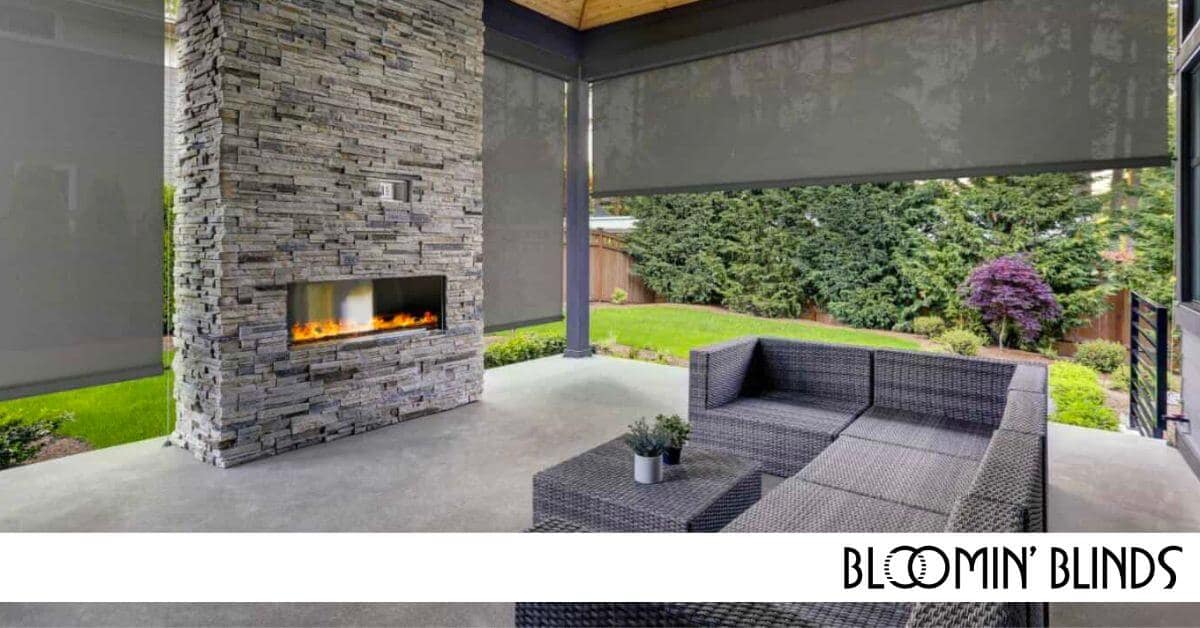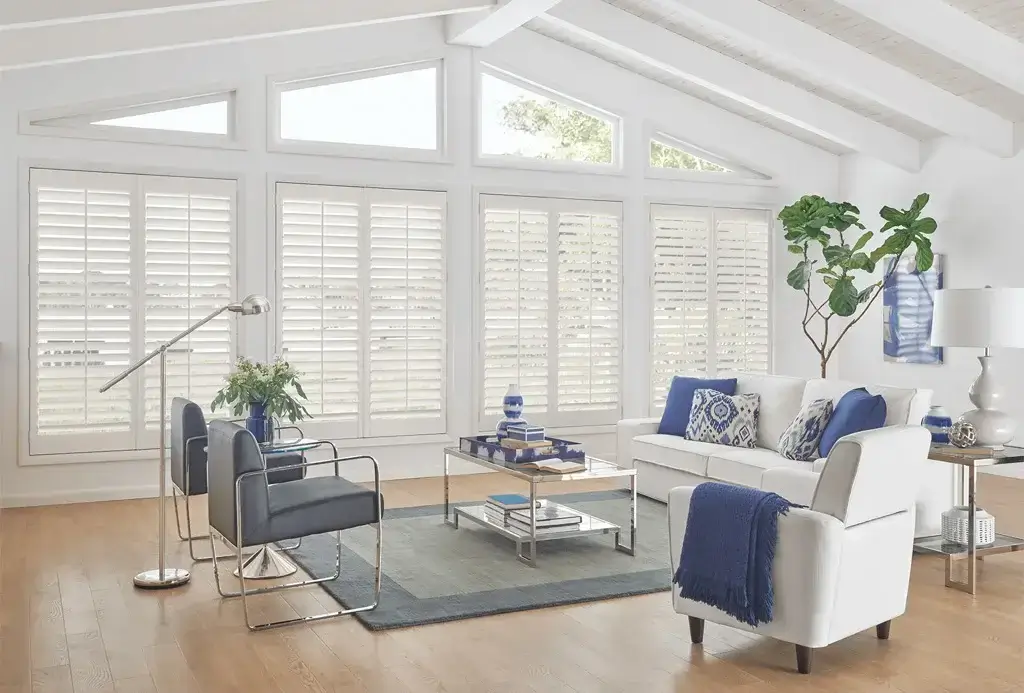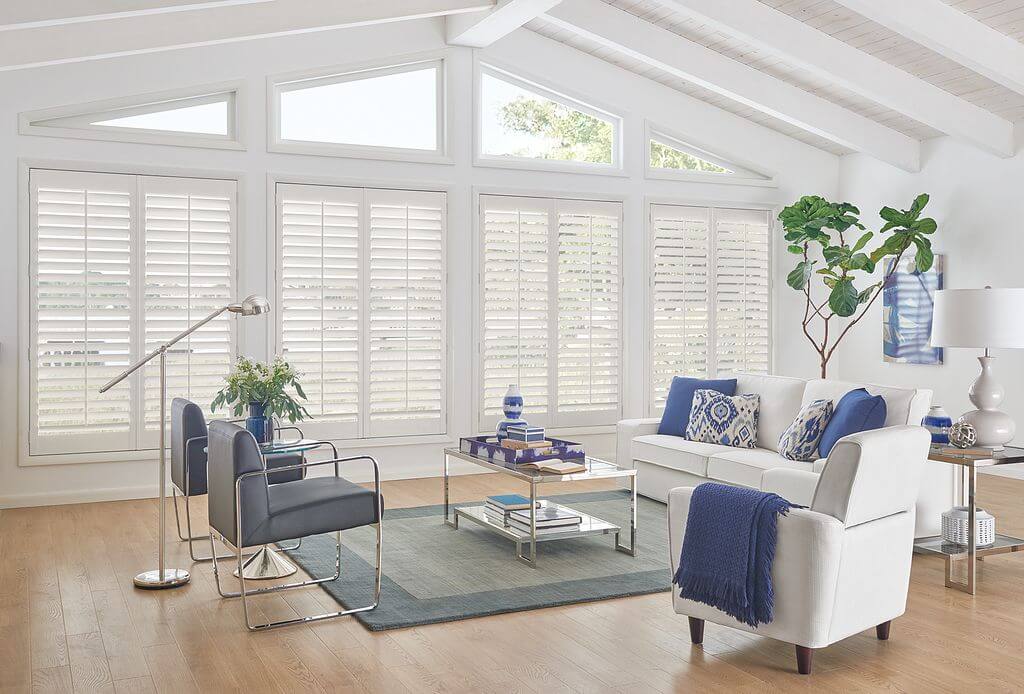Many people refer to window treatments as ‘curtains’ and ‘drapes’ interchangeably. However, knowing the difference between curtains and drapes will enable you to make better choices for your home decor. Key differences between these two popular window treatments, their unique features, and how to choose the best option for your space are discussed in this blog.
Are Curtains the Same as Drapes?
Defining Curtains and Drapes
Curtains
In contrast with drapes, curtains are fabric panels that are usually lighter and less formal. They come in many different colors, patterns, and materials which makes them adaptable for various rooms and decors. They often provide a blend of light control and privacy in living rooms, bedrooms or kitchens.

Drapes
On the contrary, drapes are usually made from heavier fabrics that are lined to block out light. This frequently makes it possible to create a more ceremonial appearance where they extend from the top of the window down to the floor surface. For instance, when designing a bedroom or home cinema room, among other spaces where one would like to minimize light penetration while maximizing privacy, draperies should be used.

Key Differences Between Curtains and Drapes
Feature | Curtains | Drapes |
Material | Lightweight fabrics (cotton, linen, etc.) | Heavier fabrics (velvet, brocade, silk, etc.) |
Length | Typically short to medium length | Usually floor-length |
Function | Decorative, light control, and privacy | Light blocking, insulation, and privacy |
Formality | Casual to semi-formal | Formal and elegant |
Styles | Various (tab-top, grommet, rod-pocket, etc.) | Pleated, pinch-pleated, grommet, etc. |
Customization | Ready-made and custom options | Mostly custom-made |
Choosing Curtains vs. Drapes
Consider Your Needs
When deciding between curtains and drapes, consider the following factors:
Light Control
If you need to block out light completely, drapes are the better choice. They are lined and made from heavier materials, effectively darkening a room. Curtains, especially those made from lighter fabrics, are better suited for diffusing light rather than blocking it out entirely.
Privacy
Again, drapes are the preferred option for maximum privacy. Their thicker, lined fabrics offer more privacy compared to curtains’ lightweight materials. However, for rooms where complete privacy isn’t necessary, curtains can provide sufficient coverage.
Style and Decor
Curtains offer more versatility in terms of style, color, and pattern. They can be casual, fun, and colorful, making them ideal for children’s rooms, kitchens, and informal living spaces. Drapes, with their formal and elegant appearance, are better suited for living rooms, dining rooms, and bedrooms where a more sophisticated look is desired.
Curtain and Drape Materials
Curtain Material
Curtains are made of different materials such as cotton, linen, polyester, or any combination. These fabrics tend to be light and have many colors and designs that are easy to maintain. Some of the common types of curtains include sheer curtains, patterned curtains, and plain-colored ones.
Drape Material
Drapes on the other hand are lined and made from heavy luxurious materials like silk, velvet or brocade. This provides a room with an elegant touch which is sometimes covered in linings that block more light and insulate better. Drapes come in various forms such as pleated drapes, grommet drapes and tailored drapes.
Length and Installation
Curtain Length
There are different lengths for curtains ranging from café curtains that just cover windowsills to full length panels touching the floor. It will depend on what you want them to achieve as well as how they will function; if you would like a more casual look then go short in your living room spaces while long ones are perfect for bedrooms or lounges.
Drape Length
Most times, there are always floor-lengths when it comes to having drapes making this feature appear dramatic and classy. Windows can also be made larger by fixing them above window frames thereby creating the impression that the ceiling is higher than it actually is.
Color and Pattern
Curtain Color and Pattern
Curtains offer a wide array of color and pattern options, making them perfect for adding a pop of color or a unique design element to a room. Whether you prefer solid color curtains, striped curtains, or floral patterns, there is a curtain style to match your decor.
Drape Color and Pattern
Drapes tend to feature more subdued colors and patterns, focusing on creating a sophisticated and timeless look. Solid color drapes in rich, deep hues are common, as are subtle patterns that add texture without overwhelming the space.
Custom vs. Ready-Made
Custom Curtains and Drapes
For a perfect fit and unique style, custom curtains and drapes are the way to go. Custom window treatments are made to your specifications, ensuring they match your decor and meet your functional needs. While more expensive, they offer unparalleled quality and personalization.
Ready-Made Curtains and Drapes
Ready-made options are more affordable and readily available, making them a popular choice for many homeowners. They come in standard sizes and a variety of styles, offering convenience and ease of installation.
Frequently Asked Questions on Curtains and Drapes
The main difference between curtains and drapes is the weight and formality of the fabric. Curtains are made from lighter materials and are more casual, while drapes are made from heavier fabrics and are more formal.
Yes, layering curtains and drapes can create a stylish and functional window treatment. Combining the two allows for flexible light control, privacy, and added insulation.
Choose ready-made window treatments for convenience and affordability. Opt for custom window treatments if you need a perfect fit, unique style, or higher-quality materials.
Key Takeaways
- Curtains are lightweight, casual, and versatile, while drapes are heavier, more formal, and often lined.
- Consider your needs for light control, privacy, style, and length when choosing between curtains and drapes.
- Both ready-made and custom options are available, each with its own benefits.
- Layering curtains and drapes can enhance functionality and add depth to your decor.
Breaking the Misconception: Curtains vs. Drapes
Understanding the difference between curtains and drapes is crucial for choosing the right window treatment for your home. Whether you prefer the casual versatility of curtains or the formal elegance of drapes, selecting the right window treatment can enhance your decor and meet your functional needs.
Ready to transform your windows with the perfect treatments? Contact Bloomin’ Blinds (Austin) today for expert advice and a wide selection of curtains and drapes. Let us help you find the ideal window treatment to elevate your home decor!











